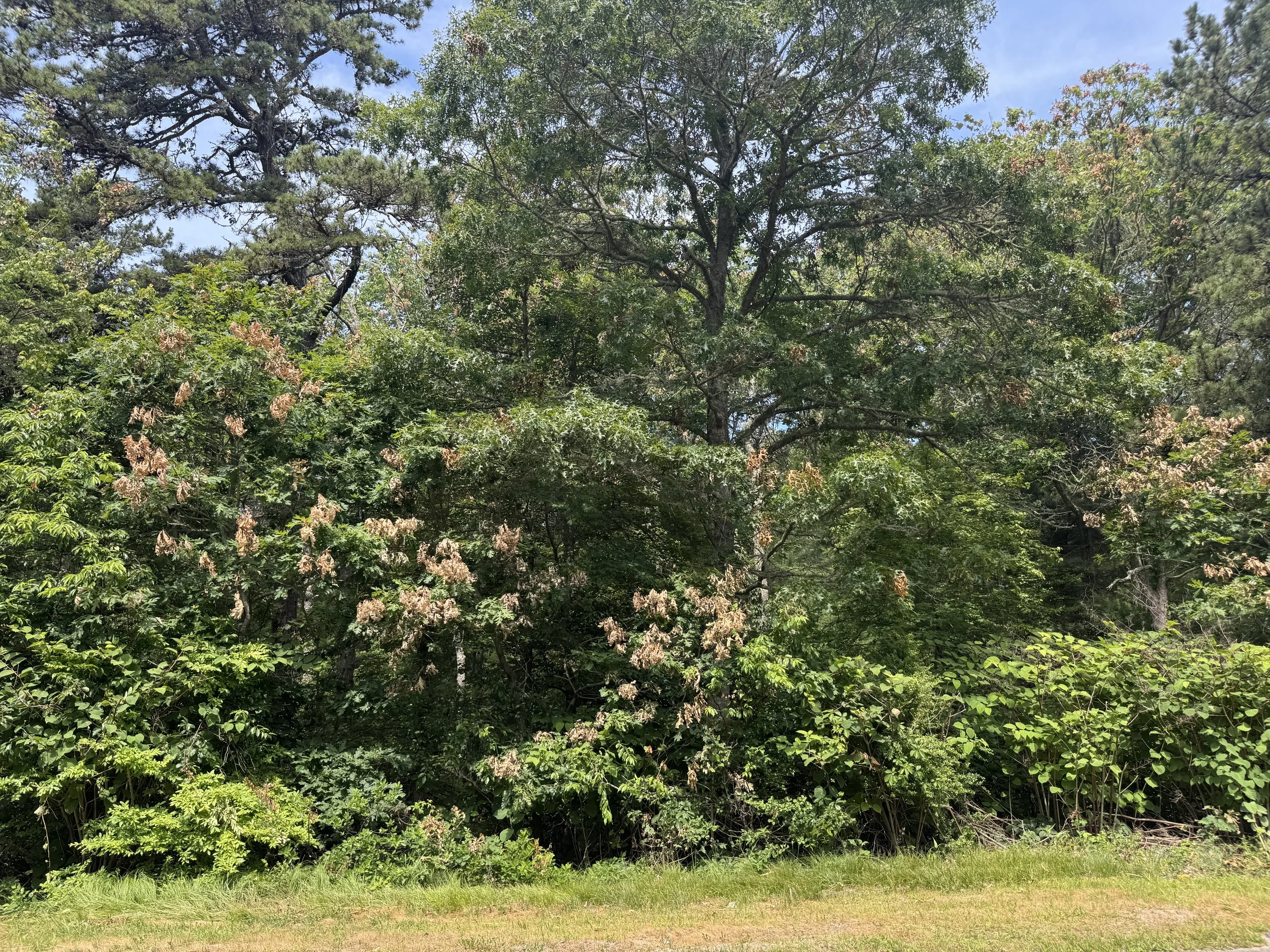cicadas return to cape cod
A member of the brood 14 cicada emergence.
If you live on the upper Cape Cod or visited this region in the month of June, you no doubt encountered the phenomenon of the whirling din of the brood 14 cicada. The high-pitched, resounding ring is the sound of a love story 17 years in the making. These purposeful creatures thrived deep beneath the ground for nearly two decades feeding on the sweet sap emitted from the roots of trees until the year of their exact maturity. Once the surface soil temperature reaches 60 degrees, they are urged upward to emerge for their final few weeks of life to procreate.
Early in May, I saw the first of the nymphs appearing from holes in the ground near the raised bed gardens in my yard. Their slick white exoskeletons quickly molted and were left like ornaments on hydrangea leaves. The adult cicada emerged still floundering with bright red eyes, adjusting to the sun and their ewfound stiff wings and land legs barely knowing how to fly or walk. It was like watching a newborn kitten or puppy exploring their surroundings tripping and bumping into obstacles.
Once they became accustomed to their new form the males thrummed their courtship songs vibrating their membranes on their abdomens like drums, the sound resonating inside their hollow bodies. The choral performance of literally tens of thousands of them singing so loud it could not be ignored by the females who answered the call fluttering their wings to announce they were ready. It was the thrilling moment they existed to experience. Living all of those many years in quiet darkness under the ground to spend just a few short weeks answering nature’s instructions.
Once the females have mated, they return to the trees where they were born, furrowing small channels into the branches to leave their eggs. Then with their work is done, the once cacophonous cicadas quietly die, but not without leaving instructions for the next very tiny generation of eggs that somehow will know as they hatch later in the summer to climb down those trees and into the soil where they will wait until it is exactly their time to emerge.
It is important to note that all the while they are prominent in our midst, they do not bite or sting. They do not kill most plants or trees. They are loud and there are so many of them, and they are large insects, and yes, they can appear frightening. But they do nothing but coexist and are an important part of our ecosystem. They aerate the soil, are food for many predators, and as they decompose, they are nutrients to the earth. They are a miraculous part of our circle of life.
Epilog
On the last day of June, I went out onto my porch for morning coffee, and it was quiet. My heart sank. No humming of the wings of the female and the whirring din of the male cicada had ended. The mating cycle was complete and that meant the extraordinary insects that had emerged from the depths of the earth in the spring by the literal millions to procreate were slowly dying. They answered a call etched in their DNA to come up from the dark soil that had been their home for 17 years, never having seen the light of day, to mate and sow the eggs for a generation they would never meet. In their quiet absence they leave only their waning bodies that nourish the earth and provide sustenance for various birds and wildlife. The tips of the branches where the female cicada have burrowed in to lay their eggs have turned brown and will ultimately fall off delivering the eggs to their earthy home. It is also a natural pruning that will encourage healthier trees next year. Everything about them has been amazing and caused me to wonder and marvel at all of creation. This is an incredibly special earth we live upon. See you in 17 years cicadas




